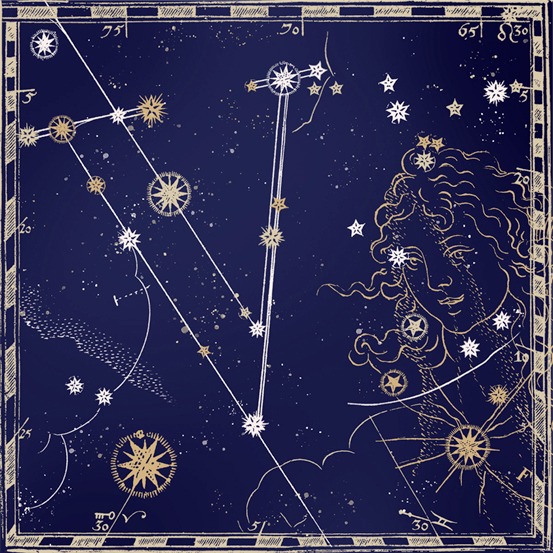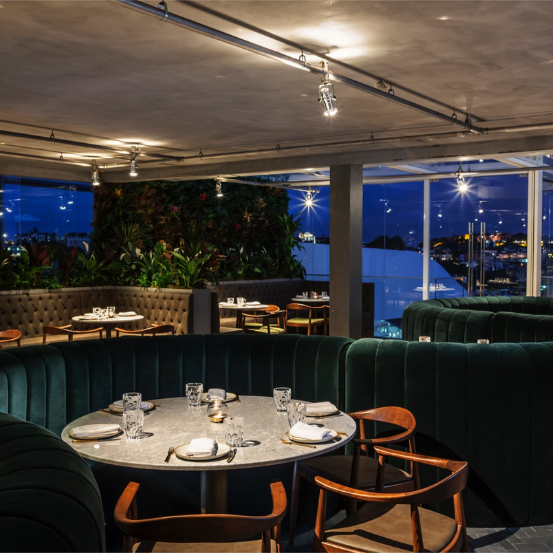Not everything is about tubers. The underground growth is also about the roots of tubers and bulbs. More than the differences that separate them, there’s what brings them closer. And no, this is not the beginning of a stringed romance. It’s the motto for an epic feast.
Not everything is about tubers. The underground growth is also about the roots of tubers and bulbs. More than the differences that separate them, there’s what brings them closer. And no, this is not the beginning of a stringed romance. It’s the motto for an epic feast.
I believe it’s transversal to all of us, in a post-adolescent time, with more incidence in some chaps than others, to dedicate ourselves to travel readings. I’m not talking about those epic books, from Fernão Mendes Pinto to Homero, going through Herman Melville. I mean the others, those that make us dream because, even if epics, they seem like adventures weirdly within our reach. From Ernesto ‘Che’ Guevara’s madness, who crossed a big part of South America on an old Norton 350cc motorcycle (La Poderosa), a journey he described in the book Motorcycle Diaries (and that made him fall in love with the indigenous people who suffered at the hands of the dictatorships established by the USA in South America, which led him to join the Révolution, to the crazy excessive whims that Jack Kerouac has graced us with on On the Road, a car ride (and some train wagons) throughout North America, going through so many books of the late Luís Sepúlveda, who awaken our passion for Patagonia, Amazonia or the Desert of Atacama. Because even if we don’t think of ourselves as capable of such exemplar descriptions, we believe the journey is within our reach. Or maybe it’s just me, who took my driver’s license on the very same year when the frontiers in Europe fell and rapidly discovered, behind the wheel of my Opel Corsa, that the best way to travel was, indeed, by taking national roads. Because the charm is not, most of the time, in the destination. Rather on everything we discover along the path, because we see it from afar and take detours, whether on the mountain range where waterfalls can be heard at every curve, whether on that uncharted village because you’re famished for a Guiso de Lentejas or some Chuletillas de Cordero Lechal. It’s still in the back of my mind to this day. Yes, I was one of the ones that takes the N2 to Chaves or the IC1 to Algarve. But I’m also referring to Travel Literature here. And I already had a few years on me when I stumbled across The Blue Highways, by William Least Heat-Moon, a descendent from Native Americans, who, at 38, after losing his job as an English teacher and “catching his wife in someone else’s bed”, transformed an old Ford van (baptizing it as Ghost Dancing) so it could fit a bed, a portable toilet and a camping stove, so he could take on a round trip (neither too on the coastline, nor on the so-called “countryside”) of 20 thousand kilometers through the United States. He called them Blue Highways because it was as such that the roadmaps of that time represented the small and nearly forgotten routes that connected the shrinking towns and villages close to the main roads. He crossed paths with the most interesting characters, from the hitchhiking Seventh Day Adventist to a runaway teenager, to a monk and a prostitute he found in the middle of the desert of Nevada. One day, at a bar (yes, one of those with a snooker table and where people can fight at the sound of Country Music), he asked the man sitting next to him: “Have you ever read any books?” to what the big man responded, “Yes, sure, I usually read the Yellow Book”. He meant the National Geographic magazine. And it was precisely in one of those copies, which could be found not that far away from any North American bar where we risk being hit with a snooker stick in the head, that I realized there are about a thirteen hundred species of potatoes, in Peru alone, their country of origin. Purple, green, orange, fuchsia, blue, red potatoes, nut potatoes, alpaca’s face potatoes, even heart ones, which is such a lucky find down there that it goes straight to Instagram with the hashtag “blessed”.
A few years ago, in a harvest for wine grapes carried out in the as beautiful as it is unknown village of Ranhados, between Meda and Penedono, the best time of the day arrived: the feast. It arrived in a Toyota Hilux 4WD which, with the trunk part serving as a table, revealed redenho, entrecôte in garlic sauce, rabbit, fried chicken, folar, various salty treats, warm bread and a pot filled with boiled potatoes with a strangely white pulp, that I have always associated with blandness in taste. I filled my plate with a bit of everything and, when I took a bite of those boiled tubers, I gave the rest back. Not even a drop of olive oil touched that plate, which was filled to the brim with… potatoes. I doubt I’ll ever eat any others just as good. Or even mildly resembling. The sad and deserted tuber (ask any food photographer to portray a desirable potato and you’ll see how hard of a task it is), because there is nothing sadder and regrettable than a boiled potato in a white plate, took another dimension there, I swear to God (any God, Teutates included), was incredible. I immediately understood why my friend, who at restaurants always asks for boiled potatoes on the side of a plate of ribs, an initiative I’ve always found weird but that, in fact, once received the full support of a waiter with a beirã accent. The question that arises is: “How does such an exemplar vegetable, which was brought from South America more than half a millennium ago and that, as such, has suffered many mutations, can have such a unique and superior taste?” I can’t give you an answer. But I can pose another question: “If that potato was that tasty, when planted on the Foz Coa area 500 years later, what will be the taste of the thirteen hundred species that are still being cultivated in their endemic country, at nearly four thousand meters high?” This one I can answer. They must be magnificent. Around a month ago, a Peruvian friend of mine, based in Portugal, went fishing with me. On the Tejo. We managed to swing some croakers, the “American” kind that nobody wants. Not nobody. Every time I wanted to throw them back into the ocean, he claimed: “It will make a wonderful ceviche.” Oh yeah? And it did. After going to that one single supermarket where it is possible to find the right kind of peppers, corn, and potatoes for the recipe, we prepared a dinner I will hardly ever forget. And it was not because of the catch of the day. Nor because of the croaker. Which was kind of good. But the potatoes, in the name of Teutates…
Amongst the thousand ways one can cook them, there is only one that allows for the true flavor of the food to come out, meaning, its quality. To boil it. Want to know what country has the best fish and seafood in the world? Portugal. Why? Because we’re the only ones that hold on to those prime-materials and dip them into salty water (when we’re not doing so with seawater) and wait for that boiling water to work its magic: to preserve the identity of a product without any add-ons (take a look at the recipe for traditional French lobster and be shocked with all the additions of carrot, celery, radishes, seaweeds and herbs). And what is there to be said of the flavor of an underground product that, visually, is as appetizing as an ad for the sermon of Father Milícias in the next Sunday’s mass? When we know that, in their country of origin, from where the Spanish brought them (forever thankful, hermanos) so it could be spread all around the world today, appeasing the toughest of stomachs, the nutritional basis is this tuber, brace yourself, boiled. In higher altitudes, gastronomy is based on potatoes. It’s a century-old tradition and its consumption is on a daily because, being it exists in such abundance and variety, it is a cheap product (a call to action to “our” codfish here that, being just as traditional, is so highly-priced we only eat it once every blue moon).
If you’re fortunate enough to travel to Peru, and once the “altitude sickness” is overcome (chewing coca leaves helps), forget the Ceviche, since we have perfectly good ones around here (the croaker on from Noélia Jerónimo, in Cabanas de Tavira, is unmissable), and instead, go for… Something that is sold everywhere, from restaurants to street food stands, where potatoes are queens, even in traditional pastries, because the Incas were just old, not dumb. Quacha chuño, the extremely spicy soup, made from sun-dried and then frozen potatoes, to what is added uchucuta sauce, made with more japaleños and lemon (this the Spanish took with them over there) and huacatay, an herb that grows on the hills of the Andes, is a must. And, speaking of the Andes, ask any guide that accompanies the traveler to the (incredibly difficult) hike up to Machu Pichu and you’ll know that every one of them carries potato powder with dried mud meat with them, the insurance all Inca descendants have so they don’t starve, as important as sushi to a samurai. With some luck, you’ll taste papa pastries, a cake that overlays thin-as-can-be potato layers, bacon, and cheese (being that some Ande varieties of potatoes have the taste – and smell – of cheese). Or the papa a la huancaina, the national dish, a mix of potatoes, boiled eggs, lettuce, and a sauce whose main ingredient is the leaf aji amarillo, an orange pepper that is used in causa, a type of lasagna, that uses potatoes instead of dough in layers that can be mixed with vegetables, seafood, chicken, or pork meat with onions, this last one a more typical one from the Amazonian region.
Only those who order a steak with just a side of rice would think potatoes only rule in Peru. If there were any questions left when it comes to the relevance of the queen tuber in the tuga gastronomy, there is the motto that rules the confection of any protein. When someone suggests that the quantity of food will not be enough for the expected number of guests, the cook will say: “It’s not enough? If it isn’t, we’ll add more potatoes.” Ah, potatoes… Boiled with codfish, roasted in the oven with lamb chops, mashed as a bed for fried squid, fries surrounding the steak with an egg on top, a murro to absorb the olive oil on the octopus à lagareiro dish, in migas with cabbage and lots of garlic as a side to alheira, is there anything more beautiful? Yes, there is. Just not better.
And beyond ourselves, used to cooking as an art form with so little, is there someone out there who also enjoys the big discovery of the Incas that the Spanish brought with them (achieving, however, the difficult prize of Worse Usage of the World’s Raw Material – that Ensaladilla de Patatas with kilos of mayo is not it, hermanitos)? Of course not! Potatoes are the insurance that countless cultures don’t endure starvation. In just five hundred years, it became as essential as the cereal used to make bread. The UN has even elected it as the World Food of the Future (2008 was the Year of the Potato), capable of eradicating hunger long before it was demonized by the supporters of paleo diets, a carrier of all maleficent carbs, although it also contains, abundantly, potassium, calcium, iron, vitamins, and fiber. It was enough that was planted on the vast grounds of Andalusia and in the prosperous Galiza, around the year 1530 so that, less than a century later, the French cook of the court of Louis XIV, the famous Parmentier, tried to introduce it into the national food plan in a way to suppress the hunger that surfaced. Unfortunately, it was soon considered a “poor people food” and became mostly used as an ornamental plant (?). Too late. The whole of Europe was already planting this species, which grew without need for much high-maintenance agricultural care and had yet another advantage… In a time when peasant cultures were being taxed, potatoes and their underground growth were not out in plain sight for the “fiscal” authorities of this Old Continent to see, neither did they catch the attention of thieves and burglars, more used to “raid” cereal crops. Three centuries later, it was such a source of subsistence that, when a mildew plague hit the British islands, destroying vast potato cultures, the Great Hunger came, in 1845. It lasted for six years and had devastating consequences for Ireland, where more than one million people perished and more than two million emigrated to the United States.
Nowadays, per year in the whole world, we consume 217 million tons of this all-ruling tuber. China and India are the biggest producers, but the champion in consumption is Byelorussia, where each person eats on average 200 kilos. Yes, not even the North Americans can beat them (in fact, the potato “recipe” of French fries is Belgium), or the Italians with their gnocchi, the English with their chips, the Spanish with their tortillas, the German with their kartoffelsuppe (yes, potato soup), the French with their fondant potatoes. I suspect though, that the Portuguese could be closer to those numbers, were it not for the choice of the south and southeast of the country for the sweet variety (of yellow pulp! Please don’t eat the one with the orange pulp).
Now, without any more delays, the technical terms of the edible underground species. To satisfy the most curious ones amongst us for general culture. They’re all roots. Tubers are characterized by having part of their stalk above the ground. And because they possess, most of them, low glycemic levels, besides being rich in vitamins, minerals, and carbs. Carrots, beetroots, mandioca, radishes and sweet potatoes are the most vastly consumed ones. The bulbs, with a specific format (as a “disc” or flattened sphere), have an underground stalk where all the nutrients can be found. Garlic and onions are the most common examples, both with anti-inflammatory and anti-bacterial properties that help regulate cholesterol levels. Tubers on the other hand (potatoes and yams) can be recognized because they look like an atrophied root, which helps them store substances such as starch and inulin, natural sources of energy and minerals, respectively. Unbelievably so, and to the curious ones still digesting this information, peanuts, whose fruit (vegetable) grows below the ground is an herbaceous plant, not fitting into any of the previous examples. Their flowers, after being fertilized, penetrate the soil with a proper structure called gynophore, which triggers a very rare process of fruitification called geocarpy, meaning, vegetables that flourish underground.
It’s even more fascinating though to think who might have been the first human to realize that plant he had just dug up was edible. Because they had to taste it. Blergh!
Translated from the original on Vogue Portugal's Underground issue, published October 2021.Full story and credits on the print issue.
Most popular


Relacionados
.jpg)

Réveillon no Hotel Tivoli Avenida Liberdade: 1 hotel, 3 experiências para celebrar a passagem de ano
22 Dec 2025
.jpg)



